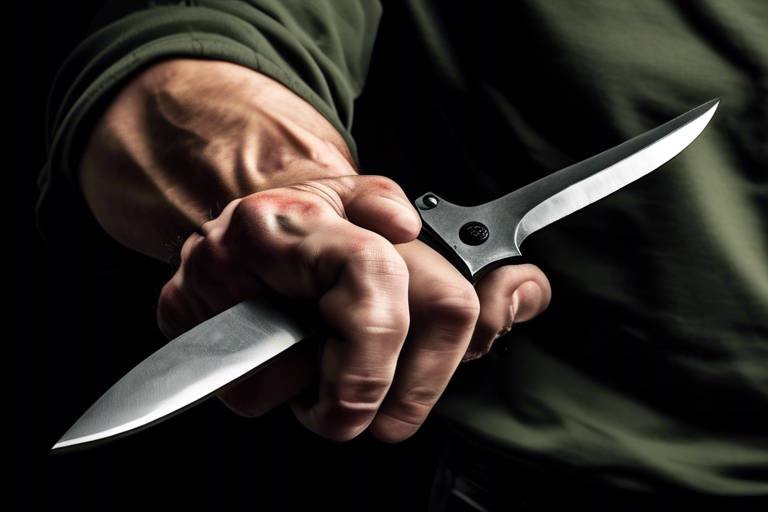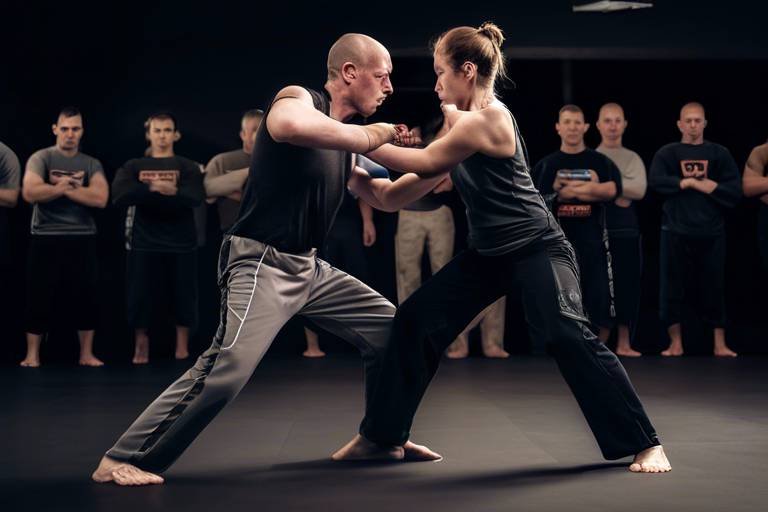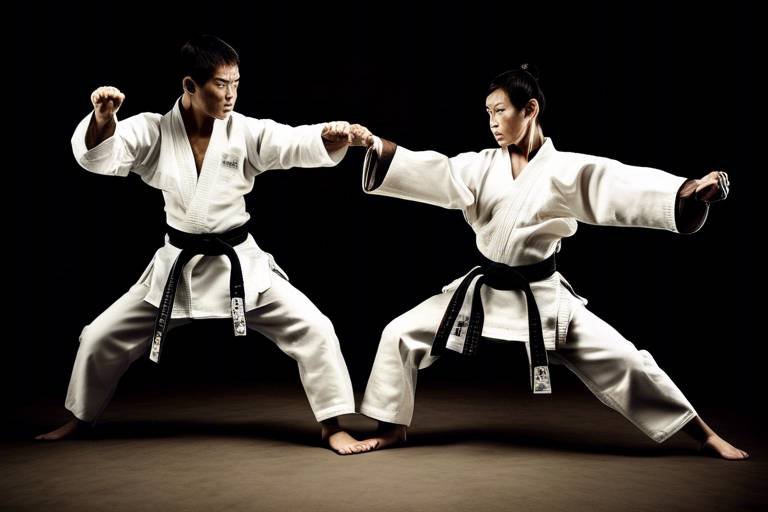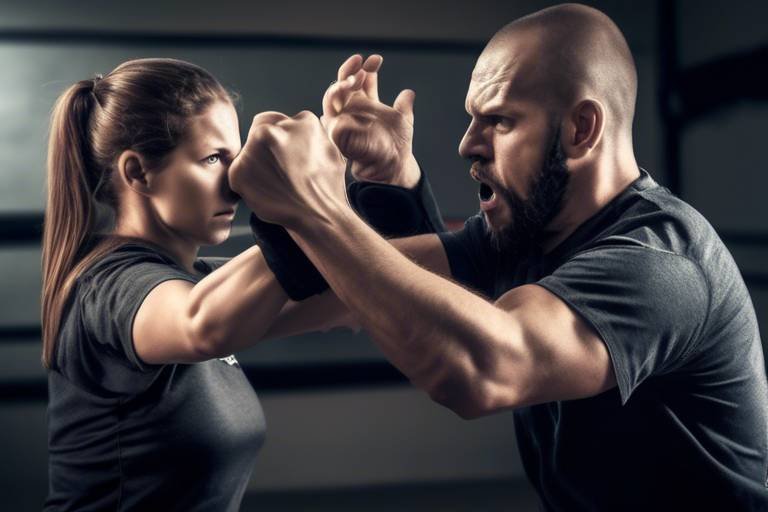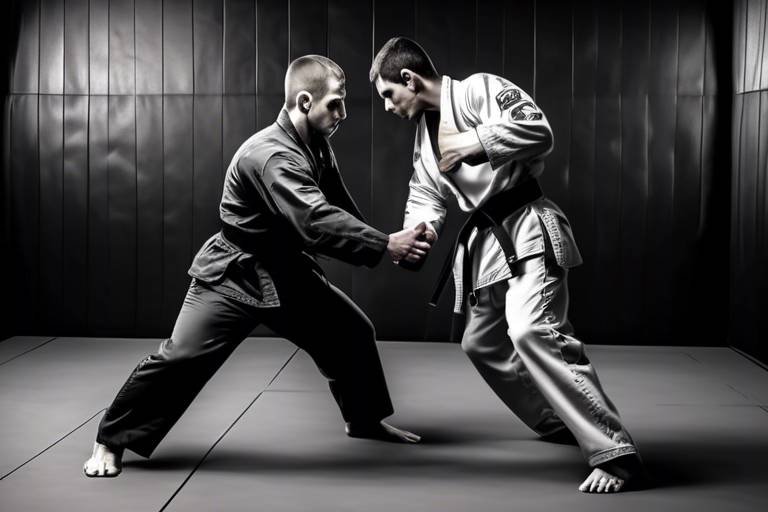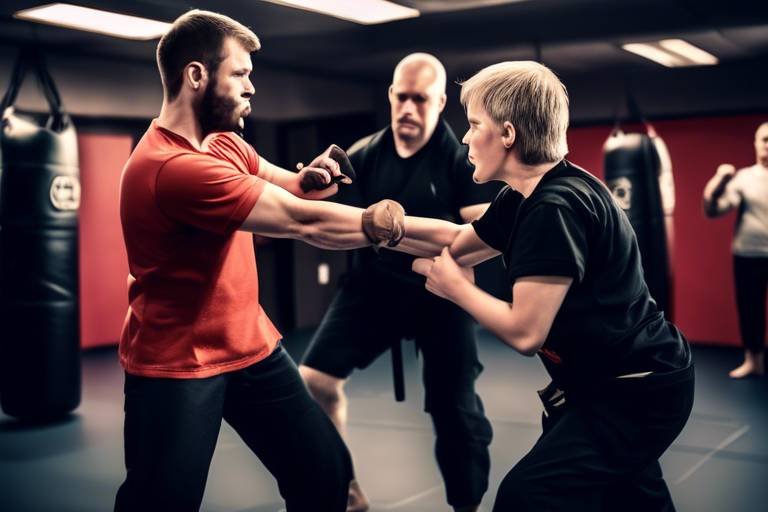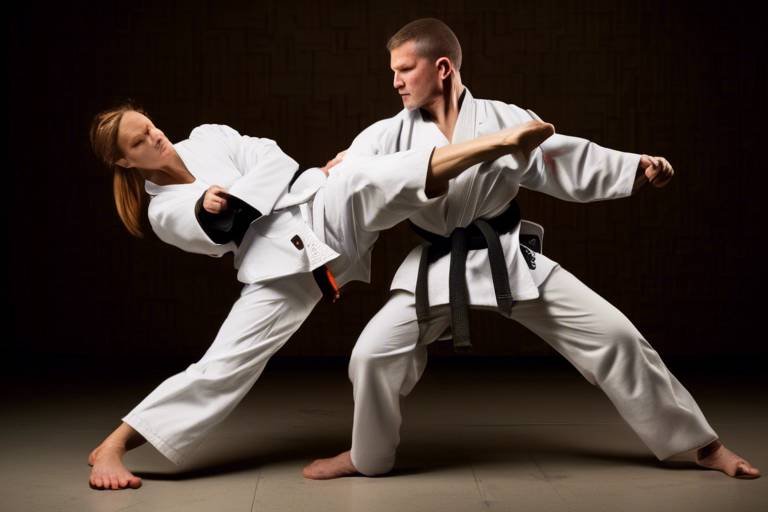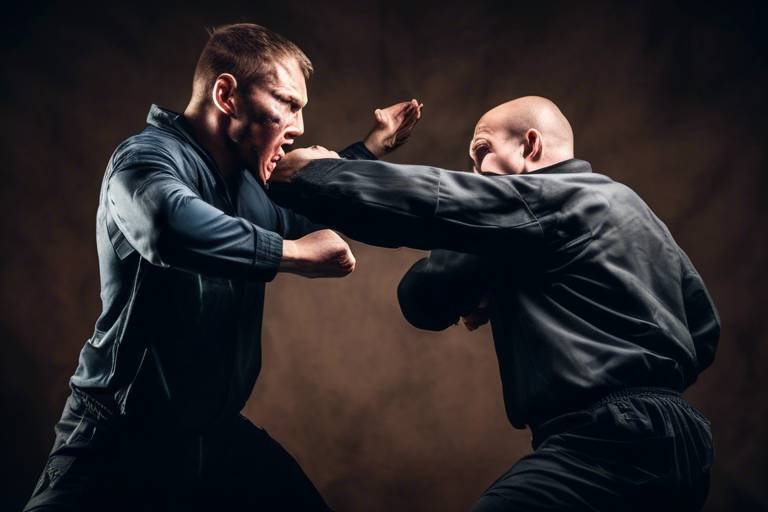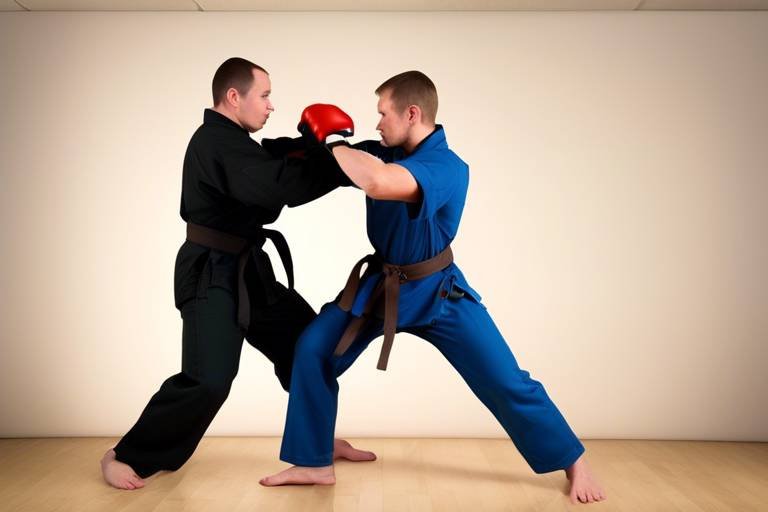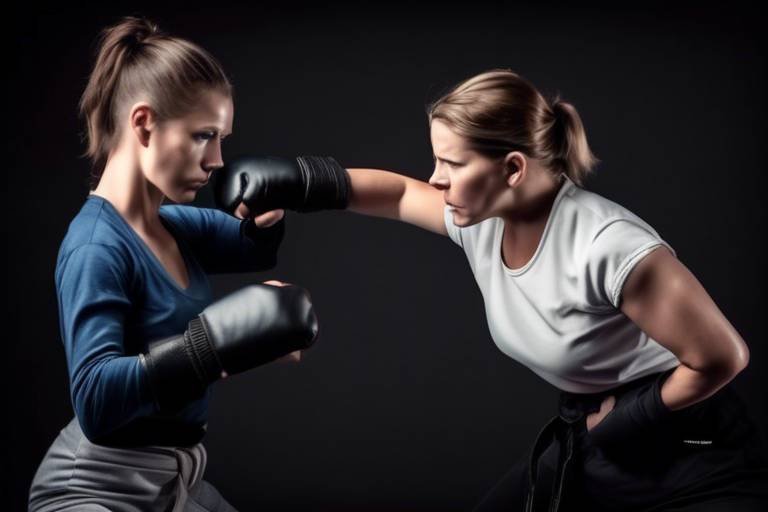Five Self-Defense Techniques for Handling Knife Attacks
This article explores effective self-defense techniques specifically designed to counter knife attacks, emphasizing practical strategies and mindset to enhance personal safety in dangerous situations.
Gaining insight into the nature of knife attacks is crucial for effective self-defense. Knife attacks can happen in various scenarios, whether it's a street confrontation, a robbery gone wrong, or even domestic disputes. Understanding the motivations behind such attacks—such as desperation, anger, or intent to harm—can help you assess the situation better. In many cases, attackers may not be fully trained or experienced, which can be an advantage for you. By recognizing the signs of an impending attack, including body language and environmental cues, you can mentally prepare yourself to respond more effectively. Always remember, the best defense is being aware of your surroundings and trusting your instincts.
Disarming an attacker can be a life-saving skill. Imagine a situation where an assailant approaches you with a knife. Your first instinct might be to run, but what if you can't? This is where learning to disarm someone becomes essential. The key to this technique lies in timing and body mechanics. You want to wait for the right moment—preferably when the attacker is committed to their strike. As they thrust the knife towards you, move to the side while simultaneously grabbing their wrist. By using your body weight and leveraging their momentum, you can twist their arm, forcing them to drop the weapon. This technique requires practice, so consider enrolling in a self-defense class to refine your skills.
Redirecting the blade involves using the attacker's momentum against them. Think of it like a dance; you want to move fluidly to avoid the danger while positioning yourself for a counter. When the attacker lunges at you, instead of trying to block the knife, you can deflect it by using your forearm or hand to guide the blade away from your body. This not only minimizes the risk of injury but also creates an opportunity for escape. The ability to effectively redirect requires practice, so training in martial arts or self-defense can be incredibly beneficial. Remember, the goal is not to engage in a fight but to find a way out safely.
Maintaining distance is a fundamental self-defense strategy. In a knife attack scenario, space can be your best friend. By creating distance between you and the attacker, you reduce the chances of getting hurt. This can be achieved through quick footwork and awareness of your surroundings. For instance, if you're in a confined space, look for ways to maneuver into an open area. Use your environment to your advantage, whether it’s backing away into a more spacious area or using obstacles to shield yourself. Remember, the more distance you have, the more time you have to react and plan your next move.
Improvising with everyday objects can be an effective defense tactic. You don’t need to be a martial arts expert to protect yourself; sometimes, all it takes is a little creativity. Common items such as a pen, a book, or even a bag can be used to shield yourself from an attack. For example, if you have a bag, you can swing it towards the attacker to create a barrier, giving you a moment to escape. Similarly, a pen can be used to jab at pressure points if you find yourself in a close encounter. The key is to always be aware of your surroundings and think on your feet. The ordinary can become extraordinary in a crisis.
Knowing when to escape is vital in self-defense. In any dangerous situation, your priority should always be to get to safety. Recognizing escape opportunities can be a game-changer. Look for exits, potential barriers, or even crowds of people that can offer protection. If you see a chance to slip away, take it! Remember, self-defense isn’t about fighting; it’s about surviving. Your ability to assess the situation quickly and make a decisive move can mean the difference between safety and harm.
A strong mindset is essential for effective self-defense. When faced with a knife attack, fear can paralyze you, but maintaining calm can be your greatest asset. Focus on assessing the threat, and remember that quick decision-making is crucial. Visualize scenarios in your mind, preparing yourself mentally for possible outcomes. This mental rehearsal can help reduce panic and increase your confidence when faced with danger. Ultimately, a clear mind and a strong will can empower you to act decisively.
Regular training is key to mastering self-defense techniques. Finding a reputable self-defense class can provide you with the skills and confidence you need. Look for classes that focus on realistic scenarios, especially those that simulate knife attacks. Additionally, practicing these techniques with a partner can help reinforce your skills. Remember, physical conditioning is also important; staying fit can improve your agility and strength, making you more capable of defending yourself when it matters most.
- What should I do if I am attacked with a knife? Stay calm, assess the situation, and look for opportunities to escape.
- Can I disarm an attacker without training? While it’s challenging, knowing basic techniques can increase your chances. However, proper training is highly recommended.
- What everyday items can I use for self-defense? Items like pens, bags, or even keys can be used as improvised weapons.
- How can I find self-defense classes near me? Search online for local martial arts studios or community centers offering self-defense workshops.

Understanding Knife Attacks
When it comes to self-defense, understanding the nature of knife attacks is paramount. Many people assume that knife attacks are random acts of violence, but in reality, they often stem from specific motivations. For instance, personal disputes, theft, or even gang-related activities can lead to such confrontations. By grasping these underlying factors, you can better prepare yourself for the unexpected. Ask yourself: what might trigger a knife attack in your surroundings? Being aware of your environment can significantly enhance your readiness.
Moreover, recognizing common scenarios where knife attacks might occur is crucial. Imagine walking down a dimly lit alley or being approached aggressively in a crowded area. These situations can escalate quickly, and understanding the dynamics at play can be your first line of defense. For example, attackers may use intimidation or surprise to gain the upper hand. This highlights the importance of situational awareness; paying attention to body language and the movements of individuals around you can provide valuable insights into potential threats.
Another vital aspect to consider is the psychological state of both the attacker and the victim. An attacker may be fueled by adrenaline, anger, or desperation, which can lead to unpredictable behavior. Conversely, victims often experience fear and panic, which can cloud their judgment. This is where the concept of mindset comes into play. Maintaining a calm and focused demeanor can help you assess the situation accurately and respond effectively. Remember, a clear mind can often be your best weapon in a crisis.
In terms of assessing the situation, it’s essential to look for clues that indicate the seriousness of the threat. For instance, is the attacker displaying aggressive body language? Are they holding the knife in a manner that suggests intent to use it? Understanding these cues can help you gauge whether to engage or retreat. It’s like reading a book; the more you practice, the better you become at deciphering the story unfolding before you.
To summarize, understanding knife attacks involves:
- Recognizing the motivations behind such attacks.
- Identifying common scenarios where they may occur.
- Being aware of the psychological states of both the attacker and the victim.
- Assessing the situation based on visual and behavioral cues.
By equipping yourself with this knowledge, you enhance your ability to react appropriately in a dangerous situation. Remember, awareness is the first step towards self-defense, and understanding the dynamics of knife attacks can make all the difference when seconds count.

Technique 1: Disarming the Attacker
Disarming an attacker can be a life-saving skill in a knife confrontation. The primary goal here is to neutralize the threat without causing unnecessary harm to yourself or the attacker. It’s important to understand that timing and body mechanics play a crucial role in successfully executing this technique. When faced with an attacker, your first instinct might be to panic, but staying calm is essential. Remember, the goal is to take control of the situation, not to escalate it.
To effectively disarm an assailant, you need to focus on a few key principles. First, be aware of your surroundings. If you can, position yourself in a way that minimizes the attacker's ability to strike effectively. Next, observe their movements closely. Most attackers rely on aggression and speed, so using their momentum against them can create an opportunity for you to act.
Here's a step-by-step breakdown of how to disarm an attacker:
- Assess the Situation: Before you make any moves, quickly evaluate the distance between you and the attacker, as well as their grip on the knife. Are they holding it with one hand or both?
- Close the Distance: If you determine that you can safely close the distance, do so quickly. This can help you get within range to disarm them.
- Use Your Hands: When you reach the attacker, aim to grab the wrist holding the knife. Your grip should be firm, but not overly aggressive. You want to control their movement without drawing attention to your intentions.
- Redirect the Blade: As you grab their wrist, use your body weight to push the knife away from you. This can be done by turning your body and stepping to the side, allowing you to redirect the blade while maintaining control over their wrist.
- Follow Through: Once you’ve redirected the knife, continue to apply pressure to their wrist and pull it towards you. This motion should force the knife out of their hand and into your control.
It’s essential to practice this technique regularly. You can do this with a training partner in a controlled environment. The more you practice, the more instinctive your movements will become, allowing you to react quickly in a real-life situation. Remember, the key to disarming an attacker lies not just in the physical techniques but also in your mental preparedness. Stay calm, assess the situation, and act decisively.
In conclusion, while disarming an attacker can be risky, it’s a technique that can save your life. Always prioritize your safety and the safety of those around you. If you ever find yourself in such a situation, remember that your goal is to escape safely. Disarming is just one of the many skills you can learn to enhance your self-defense repertoire.

Technique 2: Redirecting the Blade
Redirecting the blade is a vital self-defense technique that can turn the tables on an attacker. Imagine a scene where someone lunges at you with a knife. Instead of freezing in fear, you can use their own momentum against them. This technique is all about timing and understanding body mechanics. When you redirect the blade, you’re not just deflecting the attack; you’re creating an opening for your escape or counterattack.
To successfully redirect the blade, you need to stay calm and focused. Panic can cloud your judgment and slow your reactions. Here are some key points to consider:
- Stay aware of your surroundings: Know what’s happening around you. This awareness can help you anticipate the attacker’s movements.
- Position your body: Angle your body away from the knife. This minimizes the risk of injury and gives you a better chance to redirect.
- Use your hands effectively: When the knife comes at you, use your hands to redirect the blade away from your body. You can do this by pushing against the knife’s path, using your forearm to block, or grabbing the wrist of the attacker.
Let’s break down the steps involved in redirecting the blade:
- Assess the attack: Is the attacker lunging, slashing, or stabbing? Understanding their intent can help you react appropriately.
- Step to the side: As the attack comes, move your body to the side. This not only avoids the blade but also puts you in a better position to redirect.
- Deflect the knife: Use your hand or arm to push the knife away from your body. Aim to redirect it towards a safe angle, ideally away from you.
- Control the attacker: If possible, grab their wrist or arm to gain control. This can prevent further attacks and give you a chance to escape.
Redirecting the blade is not just a physical act; it requires a mental strategy. You must remain calm and think quickly. It’s like a dance—if you can read your partner’s movements, you can lead the way. Practicing this technique in a controlled environment, such as self-defense classes, can enhance your reflexes and confidence. Remember, the goal is not to engage in a prolonged fight but to create an opportunity to escape to safety.
In conclusion, redirecting the blade is a powerful self-defense tactic that emphasizes using an attacker’s own force against them. It requires practice, awareness, and a calm mindset. As you hone this skill, you’ll find that you not only enhance your ability to defend yourself but also empower yourself with the knowledge that you can handle dangerous situations effectively.
Q: Can anyone learn to redirect a knife attack?
A: Yes, with proper training and practice, anyone can learn this technique. It's important to find a qualified instructor who can guide you through the process safely.
Q: Is redirecting the blade safe?
A: While no self-defense technique is without risk, redirecting the blade can be safer than trying to block or grab the knife directly. It minimizes the chance of serious injury if done correctly.
Q: How can I practice this technique?
A: Practicing with a partner in a controlled environment, such as a self-defense class, is the best way to learn. Use padded weapons or props to simulate the experience safely.

Technique 3: Creating Distance
In the realm of self-defense, creating distance between you and an attacker can be your best ally, especially during a knife attack. Imagine a lion stalking its prey; the closer it gets, the more dangerous the situation becomes. Similarly, the closer an attacker with a knife is to you, the more perilous your circumstances are. By understanding how to effectively create distance, you can significantly enhance your safety and increase your chances of escaping unharmed.
First and foremost, it's essential to recognize that distance is not just physical; it's also psychological. When you maintain a safe distance, you not only protect yourself from potential harm but also assert a level of control over the situation. This can deter an attacker who may be looking for an easy target. So, how do you create this distance? Here are a few effective strategies:
- Footwork: Your feet are your most valuable tools in a self-defense scenario. Practicing proper footwork can help you swiftly move away from an attacker. Quick side steps or backpedaling can create that crucial space you need to escape or prepare for a counter-move.
- Environmental Awareness: Always be aware of your surroundings. Look for obstacles between you and the attacker, such as furniture, cars, or even bystanders. These can serve as physical barriers, buying you precious seconds to escape.
- Body Positioning: Position your body sideways to the attacker. This not only makes you a smaller target but also allows you to pivot quickly, facilitating a faster escape.
In addition to these techniques, remember that confidence plays a vital role. If you project confidence in your movements, you may dissuade the attacker from pursuing you. It's like a game of chess—when you make a bold move, your opponent has to reconsider their strategy. Practicing these techniques regularly will help you react instinctively when faced with a threat.
Moreover, consider the importance of practice. Engaging in self-defense classes that emphasize distance management will sharpen your skills. These classes often simulate real-life scenarios, allowing you to practice creating distance under pressure, which is crucial for developing muscle memory. Just like a musician practices scales, your training should focus on the fundamentals of movement and awareness.
Finally, always remember that the goal is to escape, not to engage. If you find an opportunity to create distance and flee, take it! The longer you stay in a dangerous situation, the higher the risk of injury. Think of it as a fire drill; the moment you hear the alarm, your priority is to exit the building safely, not to investigate the source of the fire.
In conclusion, creating distance during a knife attack is about more than just physical space; it's about maintaining control, projecting confidence, and knowing when to act. By implementing these techniques and practicing them regularly, you can enhance your self-defense skills and improve your chances of staying safe in a dangerous situation.
Q: What should I do if I can't create distance?
A: If creating distance isn't possible, focus on disarming the attacker or redirecting their movement. Always look for opportunities to escape rather than engage.
Q: How can I practice creating distance?
A: Enroll in self-defense classes that emphasize footwork and situational awareness. Practicing with a partner or in simulated scenarios can help reinforce these skills.
Q: Is it safe to practice these techniques alone?
A: While practicing footwork and body positioning can be done alone, it's best to practice disarming techniques and situational responses with a partner under the supervision of a qualified instructor.

Technique 4: Using Everyday Objects
When faced with a knife attack, your surroundings can become your best ally. The beauty of self-defense lies in the ability to turn ordinary items into powerful tools for protection. Imagine walking down the street, and suddenly, you find yourself confronted by an assailant with a knife. Panic can set in, but instead of feeling helpless, you can look around and see a treasure trove of potential defenses. This technique emphasizes the importance of being aware of your environment and utilizing whatever is at hand to safeguard yourself.
Everyday objects can serve as effective means of defense in critical situations. For instance, a bag can be used to shield yourself from a knife thrust, while a pen can be wielded as a makeshift weapon. Even items like keys or a water bottle can be utilized to create distance or distract the attacker. The key is to remain calm and think creatively. Here’s a quick rundown of some common items you might encounter that can be transformed into self-defense tools:
- Umbrella: A sturdy umbrella can be used to block or jab at an attacker, creating a barrier between you and the threat.
- Backpack: Use it to absorb blows or as a shield to deflect a knife attack.
- Scarf or Belt: These can be used to entangle the attacker’s arm, limiting their movement and giving you a chance to escape.
- Sticks or Poles: Any long object can be used to keep distance between you and the assailant, allowing for defensive maneuvers.
It's crucial to remember that the effectiveness of these everyday objects relies heavily on your awareness and quick thinking. Training yourself to recognize these opportunities can make a significant difference in a life-threatening situation. For instance, if you’re in a coffee shop, the ceramic mug can be thrown to distract or disrupt an attacker's focus. In a pinch, even a hot cup of coffee can serve as a deterrent!
Moreover, improvisation is key. The ability to quickly assess your environment and adapt to it can turn the tide in your favor. Picture this: you’re cornered in an alley, and the only thing within reach is a trash can lid. While it may not seem like much, it can provide a shield and buy you precious seconds to escape. The principle here is simple—stay alert and think outside the box. Your survival may depend on it!
In conclusion, utilizing everyday objects for self-defense is not just about having the right tools; it’s about the mindset and creativity you bring to the table. By training your mind to see the potential in common items, you can empower yourself to respond effectively in a crisis. Remember, the most powerful weapon you have is your ability to adapt and use what you have at hand!

Technique 5: Escape Strategies
When faced with a knife attack, the most crucial skill you can possess may very well be the ability to escape. The reality is that not every situation can be resolved through physical confrontation; sometimes, the best defense is a swift and strategic retreat. Recognizing the right moment to escape can mean the difference between safety and injury. But how do you know when it's time to make a run for it? Let's break it down.
First and foremost, awareness of your surroundings is vital. This means being conscious of the environment around you, including potential escape routes. Are you near a crowded area where you could find help? Or are you in a more isolated spot? Understanding your environment allows you to make quick decisions. For instance, if you find yourself in a narrow alley, your options for escape may be limited. In contrast, a busy street could provide multiple avenues to safety.
Another important aspect is reading the attacker's body language. If the attacker seems distracted or hesitant, that might be your cue to make a move. In such moments, a quick glance around can help you identify the best path to take. Remember, a sudden burst of movement can often catch an attacker off guard, giving you the upper hand. You might think of it like a game of chess; sometimes, it’s not about the pieces you have but the moves you make that will determine the outcome.
Additionally, practice makes perfect. Regularly rehearsing escape strategies can help solidify your instincts. You might want to engage in drills that simulate various scenarios. For example, practice running towards a designated safe spot while maintaining awareness of your surroundings. This kind of training can be invaluable, as it conditions your mind and body to react swiftly and effectively under pressure.
In the heat of the moment, it’s easy to become overwhelmed. Therefore, having a mental checklist can be beneficial. Here’s a simple framework to remember when you find yourself in a dangerous situation:
- Assess the situation: Is the attacker focused on you? Are there others around who can help?
- Identify escape routes: Look for exits, whether it's a door, window, or even a path through a crowd.
- Make your move: Once you’ve identified a route, act decisively and quickly.
- Stay alert: Just because you’re escaping doesn’t mean the threat is gone. Keep your head on a swivel.
Lastly, it’s essential to understand that escape is not a sign of weakness. On the contrary, it shows intelligence and foresight. In many cases, avoiding confrontation altogether is the most effective strategy. So, the next time you think about self-defense, remember that sometimes the best move is to simply get away.
Q: What should I do if I can't escape?
A: If escape is not an option, focus on disarming the attacker or redirecting their attack. Always prioritize your safety and try to create distance.
Q: How can I prepare for a potential knife attack?
A: Regular self-defense training, situational awareness, and mental conditioning can help you prepare for various scenarios, including knife attacks.
Q: What if I encounter an attacker in a crowded area?
A: Use the crowd to your advantage. Look for opportunities to blend in or seek help from bystanders. Remember, your safety is paramount.

The Role of Mindset
When it comes to self-defense, especially against knife attacks, the mindset you adopt is just as crucial as the techniques you learn. Imagine you're in a tense situation—your heart is racing, and every instinct in your body is screaming to run or freeze. But what if I told you that your mental state could be your greatest ally? A strong, focused mindset can make the difference between panic and decisive action.
First, let's talk about calmness. Maintaining composure in a high-pressure situation allows you to think clearly and assess the threat. Think of it like being a quarterback in football: when the game gets intense, the best quarterbacks stay cool under pressure, scanning the field for options rather than succumbing to chaos. In a similar vein, you need to train yourself to remain calm, which can be achieved through practices like meditation or deep breathing. These techniques help you control your physiological responses to stress, making it easier to react appropriately when faced with danger.
Next, consider the importance of threat assessment. This involves quickly analyzing the situation to determine the level of danger you’re facing. Is the attacker aggressive, or are they simply trying to intimidate? Understanding their motivations can guide your response. For instance, if the attacker is under the influence of substances or acting irrationally, it might be more effective to create distance and escape rather than engaging. Here’s a quick table summarizing how to assess the situation:
| Behavior | Potential Response |
|---|---|
| Aggressive posture | Prepare to defend or escape |
| Verbal threats | Stay calm, look for escape routes |
| Confused or hesitant | Attempt to de-escalate |
Finally, quick decision-making is paramount. In a crisis, you often have mere seconds to decide how to react. This is where training comes into play. The more you practice self-defense techniques, the more instinctual your responses will become. Your body will learn to react without waiting for your brain to catch up, which is essential when faced with a knife-wielding attacker. Picture a dancer performing on stage; through countless rehearsals, their movements become fluid and instinctual, allowing them to respond gracefully to any misstep. Similarly, with enough practice, your self-defense skills can become second nature.
In summary, the role of mindset in self-defense cannot be understated. By cultivating calmness, honing your threat assessment skills, and improving your decision-making abilities through practice, you can enhance your overall effectiveness in a dangerous situation. Remember, it’s not just about the techniques you learn; it’s about how you think and respond when it matters most.
- What should I do if I can't remain calm during an attack? Practice mindfulness techniques regularly, such as meditation or deep breathing exercises, to help you manage stress in high-pressure situations.
- How can I improve my threat assessment skills? Engage in role-playing scenarios with friends or instructors to practice recognizing and reacting to different types of attacks.
- Is it necessary to train regularly? Yes! Regular training helps reinforce your skills and ensures that your responses become automatic in real-life situations.

Training and Practice
When it comes to self-defense, especially against knife attacks, are not just beneficial—they're essential. Imagine trying to ride a bike without ever having practiced; you wouldn't feel confident, right? The same principle applies here. Regular training helps to develop muscle memory, making your responses instinctive rather than deliberate. This instinctual reaction can be the difference between safety and injury in a high-stress situation.
Finding the right self-defense class is crucial. Look for programs that focus specifically on knife defense and incorporate realistic scenarios into their training. Many martial arts schools offer classes in disciplines like Krav Maga, Brazilian Jiu-Jitsu, or Filipino Martial Arts, all of which provide valuable techniques for dealing with knife threats. When selecting a class, consider the following factors:
| Factor | Importance |
|---|---|
| Instructor Experience | Look for instructors with real-world experience or extensive training in self-defense. |
| Class Size | Smaller classes allow for more personalized attention and feedback. |
| Realistic Training | Classes should include sparring or scenario-based training to simulate real-life situations. |
Moreover, practice doesn’t stop at the dojo or gym. It's important to incorporate self-defense drills into your routine. Set aside time each week to practice techniques learned in class. You can do this with a partner or even solo, using a mirror to check your form. Regular practice will help you refine your techniques and build confidence in your abilities.
Another vital aspect of training is physical conditioning. Self-defense requires not just technique but also strength, agility, and endurance. Consider adding exercises that enhance your overall fitness, such as:
- Cardiovascular workouts: Running, cycling, or swimming can improve your stamina.
- Strength training: Focus on core and upper body strength to enhance your striking power.
- Flexibility exercises: Yoga or stretching can improve your range of motion, making it easier to evade attacks.
Finally, remember that self-defense is as much a mental exercise as it is a physical one. Visualization techniques can be beneficial. Spend a few minutes each day imagining how you would respond in various scenarios. This mental rehearsal can help prepare you for the real thing, making your reactions quicker and more effective.
In conclusion, training and practice are foundational to effective self-defense against knife attacks. By committing to regular training, focusing on physical conditioning, and engaging in mental preparation, you can significantly enhance your ability to protect yourself. Remember, the goal isn’t just to learn how to fight; it’s about equipping yourself with the skills and confidence to handle dangerous situations with poise.
Q: How often should I train for self-defense?
A: Ideally, you should aim for at least 2-3 times a week to build and maintain your skills effectively.
Q: Can I practice self-defense techniques at home?
A: Yes! Many techniques can be practiced solo or with a partner at home. Just ensure you have enough space and take safety precautions.
Q: What should I do if I can't find a local self-defense class?
A: Consider online courses or instructional videos, but be cautious and choose reputable sources. Practicing with a friend can also be beneficial.
Frequently Asked Questions
- What should I do if I encounter a knife attack?
If you find yourself in the unfortunate situation of facing a knife attack, your first instinct should be to remain calm. Assess the situation quickly, and if possible, look for an escape route. Remember, the primary goal is your safety, so prioritize creating distance between you and the attacker.
- Can I really disarm an attacker without getting hurt?
Yes, disarming an attacker is possible, but it requires practice and understanding of body mechanics. Techniques that focus on timing and leverage can help you safely disarm someone wielding a knife. However, this should only be attempted if you feel confident in your ability to execute the technique effectively.
- How can I redirect a knife attack?
Redirecting a knife involves using the attacker's momentum against them. By moving your body in a way that deflects the blade, you can minimize the risk of injury. This technique requires quick reflexes and awareness of your surroundings, so practice is essential.
- What are some effective ways to create distance during an attack?
Creating distance can be achieved through effective footwork and situational awareness. You can sidestep or back away while keeping your eyes on the attacker. Using obstacles in your environment can also help you maintain a safe distance.
- What everyday objects can I use for self-defense?
Many everyday objects can serve as improvised weapons in a knife attack. Items like keys, pens, or even a bag can be used to protect yourself. The key is to be aware of your surroundings and think creatively about what you have at hand.
- When is it appropriate to escape rather than fight back?
Knowing when to escape is critical in self-defense. If you see an opportunity to flee safely, take it! Engaging in a fight should be your last resort, especially when the attacker has a weapon. Your safety should always come first.
- How important is mindset in self-defense situations?
A strong mindset can make all the difference in a self-defense scenario. Staying calm allows you to assess threats better and make quick decisions. Training your mind to handle pressure can significantly enhance your ability to respond effectively during an attack.
- How often should I train to stay prepared?
Regular training is vital for mastering self-defense techniques. Aim for consistent practice, whether through classes or solo drills. Physical conditioning also plays a crucial role, so incorporate fitness into your routine to enhance your readiness for potential knife attacks.

